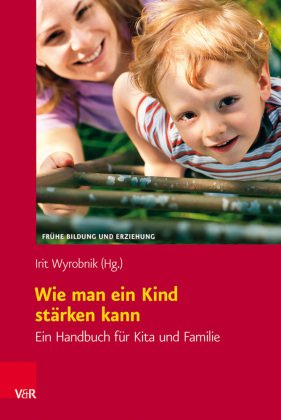Wie man ein Kind stärken kann - Ein Handbuch für Kita und Familie
| Verlag | Vandenhoeck & Ruprecht |
| Auflage | 2016 |
| Seiten | 347 |
| Format | 23,2 x 15,5 x 2,5 cm |
| Gewicht | 584 g |
| Reihe | Frühe Bildung und Erziehung |
| ISBN-10 | 3525701349 |
| ISBN-13 | 9783525701348 |
| Bestell-Nr | 52570134A |
Wie können wir Kinder in wichtigen Übergangssituationen stärken, z. B. beim Übergang von der Familie in den Kindergarten? Wie werden wir unterschiedlichen Kindern gerecht, z.B. Mädchen, Jungen, Kindern mit Migrationshintergrund? Welche Medien, Formen und Bildungsgelegenheiten können hierbei besonders hilfreich sein? Wie kann man etwa Kinder unterstützen, die ein Familienmitglied verloren haben oder in Trennungs- / Scheidungsfamilien aufwachsen? Kann man Kinder vor Drogen und sexuellem Missbrauch schützen? Viele Fragen - viele wissenschaftlich und elementarpädagogisch fundierte Antworten für Kita und Familien!
Strengthening the self-confidence and experiences of self-efficacy in children.
Wie werden wir unterschiedlichen Kindern gerecht, zum Beispiel Mädchen, Jungen, Kindern mit Migrationshintergrund, hochbegabten Kindern? Wie können wir Kinder in wichtigen Übergangsphasen stärken, zum Beispiel beim Übergang vom Kindergarten in die Grundschule? Was ist zu tun, wenn Kinder schon sehr früh in schwierige Lebenslagen geraten? Wie kann man etwa Kinder unterstützen, die ein Familienmitglied verloren haben, oder solche, die in Trennungs- / Scheidungsfamilien aufwachsen? Kann man Kinder vor Drogen oder sexuellem Missbrauch schützen? Diese und viele weitere Fragen - viele wissenschaftlich und elementarpädagogisch fundierte Antworten für Kita und Familie!
Leseprobe:
Mit einem Vorwort von Gabriele Haug-Schnabel
Strengthening the self-confidence and experiences of self-efficacy in children.
Just being a child - that is not so easy anymore in our modern world. How to best prepare children for their future?How can we adults strengthen our children for going through important transitional phases, e.g., when exiting the family fold to enter kindergarten? How can we treat each child fairly, e.g., girls, boys, children from other cultures? What media, forms and educational chances can best help us in this endeavour? How can we support children who have lost a parent or other family member or who are growing up in broken homes? How can we protect children from drugs and sexual abuse? These are some of the questions addressed in this volume and answered based on the latest scientific findings and educational experiences.

